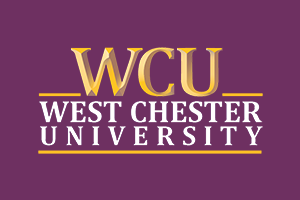Fact Sheet
Our programs provide close interaction between students and faculty, access to an excellent library, and extensive computer support services. These are all instrumental in providing our students with a solid, undergraduate background in mathematics.
Career Opportunities
A graduate who holds a bachelor's degree in mathematics can pursue entry-level positions leading to highly paid positions in business, industry, government, and teaching.
Companies in the computer and telecommunications industries employ students with a strong background in mathematics, as do energy producing companies, financial organizations, insurance companies, and consulting firms.
Many branches of the local, state, and federal governments employ mathematicians working under various job titles such as cryptanalyst, statistician, operation researcher, and actuary.
Graduates of the department have found positions with organizations such as DuPont, General Electric, Merck, and RCA. Graduates in Mathematics Education have found employment as teachers and administrators at universities and public, private, and parochial schools.
Graduates also have entered advanced study programs at the nation's leading universities.
Undergraduate Degree
Bachelor of Arts in Mathematics. This program begins with a core that includes calculus, computer science, physics, statistics, and background courses, followed by a required sequence of courses covering the major areas of the mathematical sciences - algebra, analysis, geometry, statistics, and applied mathematics.
Bachelor of Science in Education - Mathematics. This degree prepares you for certification as a teacher of mathematics in Pennsylvania's secondary schools. This program provides a good grounding in calculus, algebra, geometry, and statistics. Also, you will be instructed in the teaching of mathematics in secondary school classrooms. The department places emphasis on meaningful contemporary applications of mathematics.
Bachelor of Science in Mathematics This degree provides students with a wide choice of career-oriented programs by allowing the declaration of a concentration in various branches of applied mathematics. The program is designed to position its graduates for a career in applied mathematics.
Students enrolled in this program are required to declare a concentration. Current concentrations include actuarial science, statistics, mathematics of finance, and applied and computational mathematics. The concentration must be selected no later than the second semester of the sophomore year. Students generally spend most of the first two years taking core requirements common to all concentrations or certain prerequisites. Mathematics and cognates (courses in fields closely related to mathematics) required for a specific concentration are normally taken during the final two years of the program. The mathematics courses are aimed at linking the course content to applications in the real world. Cognates are aimed at demonstrating the pervasiveness and importance of mathematics in other applied-oriented disciplines.
The Student Handbook for Mathematics Majors should be consulted for current requirements in mathematics degree programs.
Minors
Mathematics. As a baccalaureate student, you may receive transcript recognition for a minor area of study in such areas as astronomy, computer science, economics, finance, and physics by completing four required courses and two electives selected from the approved list.
Elementary School Mathematics (K-8). As a baccalaureate student in elementary education, you may receive transcript recognition for a minor area of study in mathematics by completing six required courses.
In the above minors, you must earn a minimum grade of C- in each course and have an overall GPA of at least 2.0 in the courses taken in the minor.
Auxiliary Teaching Support
The department maintains a Student/Tutorial Center (Room 105) staffed by advanced students. Those that qualify to staff the Tutorial Center acquire pre-professional teaching experience, help their peers, and develop communication skills
Technical and Related Support
Students have access to several microcomputer labs with full internet access and mathematical, statistical, and programming software, including: Mathematica, Maple, MATLAB, MiniTab, and SAS. These computer labs are located in rooms 103 and 109 next to the Student Tutorial Center. Desktop computers also are available in the Student Tutorial Center (Room 105). The Department has a Seminar Room (Room 104) that includes a small mathematics library. The popular Wednesday afternoon “teas” for both students and faculty are held in room 105.
Special Study Opportunities
If you major in Mathematics Education, you will teach in nearby secondary schools. This program normally provides two, seven-week placements: one in a middle school, the other in a high school.
Special Entrance Requirements
Those interested in one of the above programs should have a solid background in high school mathematics and a strong score in the mathematics portion of the SAT.
Related Student Activities
Pi Mu Epsilon (mathematics honor society)
Advanced Degree
Master of Arts in Mathematics (concentrations: pure mathematics or mathematics education)
Master of Science in Applied Statistics
M.S. Applied and Computational Mathematics
Faculty
Our faculty hold advanced degrees from major universities. Many have gained both national and international recognition in research and teaching. A list of Department faculty members that includes their contact information can be found on the Faculty Page.
For More Information
Dr. Allison Kolpas, Chair
Department of Mathematics
25 University Avenue
West Chester University
West Chester, PA 19383
610-436-2440
